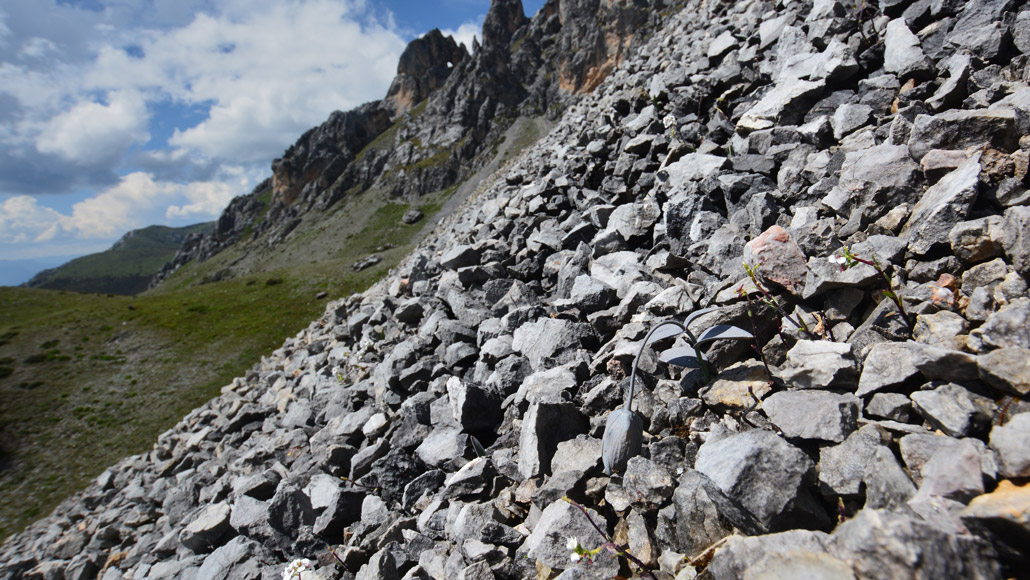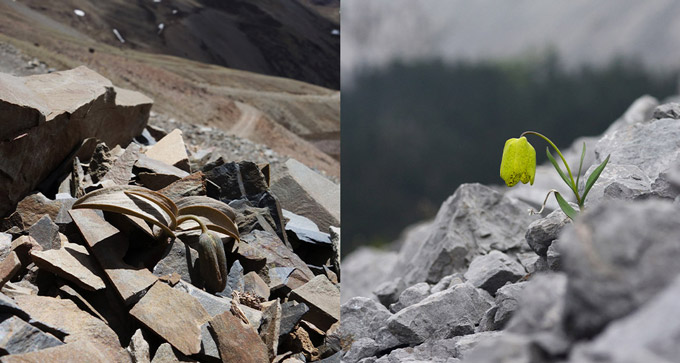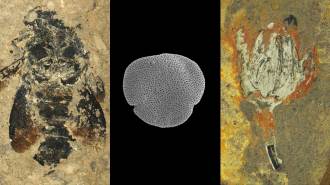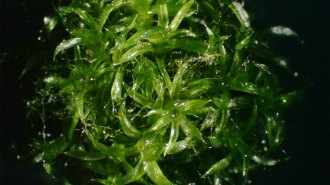These plants seem like they’re trying to hide from people
A plant used in Chinese traditional medicine has evolved camouflage in heavily harvested areas

Can you spot the plant growing here? The gray Fritillaria delavayi (center, right) blends in with its rocky background high in the mountains of southwestern China. The plants are highly sought after for use in traditional Chinese medicine.
Y. Niu
- More than 2 years ago
Fritillaria plants should be simple to spot.
The usually bright green plants often stand alone amid the jumbled scree that tops the Himalayan and Hengduan mountains in southwestern China — easy pickings for traditional Chinese medicine herbalists, who’ve ground the bulbs of wild Fritillaria into a popular cough-treating powder for more than 2,000 years. The demand for bulbs is intense, since about 3,500 of them are needed to produce just one kilogram of the powder, worth about $480.
But some Fritillaria are remarkably difficult to find, with living leaves and stems that are barely distinguishable from the gray or brown rocky background. Surprisingly, this plant camouflage seems to have evolved in response to people. Fritillaria delavayi from regions that experience greater harvesting pressure are more camouflaged than those from less harvested areas, researchers report November 20 in Current Biology.
The new study “is quite convincing,” says Julien Renoult, an evolutionary biologist at the French National Centre for Scientific Research in Montpellier who wasn’t involved in the study. “It’s a nice first step toward demonstrating that humans seem to be driving the very rapid evolution of camouflage in this species.”
Camouflaged plants are rare, but not unheard of, says Yang Niu, a botanist at the Kunming Institute of Botany in China, who studies cryptic coloration in plants. In wide open areas with little cover, like mountaintops, blending in can help plants avoid hungry herbivores (SN: 4/29/14). But after five years of studying camouflage in Fritillaria, Niu found few bite marks on leaves, and he did not spot any animals munching on the plants. “They don’t seem to have natural enemies,” he says.
So Niu, his colleague Hang Sun and sensory ecologist Martin Stevens of the University of Exeter in England decided to see if humans might be driving the evolution of the plants’ camouflage. If so, the more heavily harvested a particular slope, the more camouflaged the plants that live there should be.
In an ideal world, to measure harvesting pressure “you’d have exact measures of exactly how many plants had been collected for hundreds of years” at multiple sites, Stevens says. “But that data is practically nonexistent.”
Luckily, at seven study sites, local herbalists had noted the total weight of bulbs harvested each year from 2014 to 2019. These records provided a measure of contemporary harvesting pressure. To estimate further back in time, the researchers assessed ease of harvesting by recording how long it took to dig up bulbs at six of those sites, plus an additional one. On some slopes, bulbs are easily dug up, but in others they can be buried under stacks of rocks. “Intuitively, areas where it’s easier to harvest should have experienced more harvesting pressure” over time, Stevens says.
Both measures revealed a striking pattern: The more harvested, or harvestable, a site, the better the color of a plant matched its background, as measured by a spectrometer. “The degree of correlation was really, really convincing for both metrics we used,” Stevens says.

Human eyes also had a harder time spotting camouflaged plants in an online experiment, suggesting that the camouflage actually works.
Hiding in plain sight may present some challenges for the plant. Pollinators might have a harder time finding camouflaged plants, and the gray and brown coloration could impair photosynthetic activity. Still, despite those potential costs, these F. delavayi show just how adaptable plants can be, Steven says. “The appearance of plants is much more malleable than we might have expected.”






